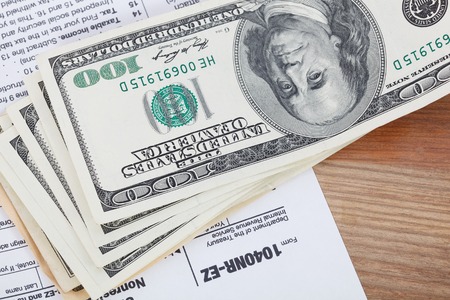1. Understanding the Reality of Medical Emergencies in the U.S.
Medical emergencies can happen to anyone, and in the United States, dealing with unexpected medical expenses is a real concern for many families. Even with health insurance, many Americans find themselves facing large bills that can disrupt their financial stability. But why is this such a common problem?
Gaps in Insurance Coverage
Many people believe having health insurance means they are fully protected from high medical bills. Unfortunately, thats not always the case. Insurance plans often come with exclusions, limits on coverage, or networks that may not include all providers. If you receive care outside your network or need a service thats not covered, you might have to pay much more out of pocket than expected.
Common Gaps in Coverage
| Type of Gap | Description | Potential Impact |
|---|---|---|
| Out-of-Network Care | Treatment received from doctors or hospitals not included in your insurance plans network | Higher out-of-pocket costs or no coverage at all |
| Excluded Treatments | Certain procedures or medications not covered by your plan | You pay full price for these services |
| Limited Coverage Amounts | Caps on how much the insurer will pay per year or per treatment | Bills above these limits become your responsibility |
High Deductibles and Out-of-Pocket Costs
Another big reason why unexpected medical expenses are so common is the rise in high-deductible health plans (HDHPs). These plans typically offer lower monthly premiums but require you to pay more before your insurance kicks in. For example, if you have a $3,000 deductible, you must pay the first $3,000 of covered medical costs yourself each year.
Average Cost Breakdown for a Typical Emergency Room Visit*
| Expense Type | Average Cost (With Insurance) | Average Cost (Without Insurance) |
|---|---|---|
| Emergency Room Fee | $150–$500 (after deductible) | $1,000–$2,000+ |
| X-rays/Imaging | $50–$200 (after deductible) | $500–$1,000+ |
| Lab Tests | $20–$100 (after deductible) | $100–$500+ |
| Treatment/Procedures | $100–$500 (after deductible) | $1,000–$5,000+ |
*Actual costs vary based on location and specific treatment needs.
The Rising Cost of Healthcare in America
The overall cost of healthcare continues to climb in the U.S., making it even harder to prepare for sudden medical bills. Prescription drug prices, hospital stays, and specialist visits are all increasing year after year. Even routine check-ups can result in unexpected charges due to co-pays or tests that arent fully covered by insurance.
2. The Financial Fallout of Unplanned Medical Bills
Getting hit with an unexpected medical bill can feel like a punch to the gut—especially in the U.S., where healthcare costs are often sky-high. Even if you have insurance, deductibles, copays, and services not covered by your plan can add up fast. These surprise expenses can quickly throw your budget off balance and have some serious financial consequences.
How Medical Emergencies Can Impact Your Finances
When youre faced with sudden medical bills, its not just about coming up with the money right away. There are ripple effects that can last for months or even years:
- Debt Accumulation: Many Americans end up putting medical expenses on credit cards or taking out loans. This means you could be paying high interest rates on top of your original bill.
- Credit Score Damage: If you cant pay your bills on time, unpaid medical debt might get sent to collections. This can seriously hurt your credit score, making it harder to borrow money or qualify for good rates in the future.
- Stress and Anxiety: The emotional toll of dealing with unexpected bills can be overwhelming. Financial stress is linked to anxiety, sleepless nights, and even impacts your overall health.
The Real Costs of a Medical Emergency
Heres a quick look at how a single medical emergency can affect your wallet:
| Expense Type | Potential Cost (USD) | Impact on Finances |
|---|---|---|
| ER Visit (with insurance) | $500 – $3,000+ | Deductibles & copays; possible credit card use |
| Outpatient Surgery | $1,000 – $10,000+ | High risk of debt if uninsured or underinsured |
| Prescription Medications | $50 – $500+/month | Recurring costs strain monthly budget |
| Lost Wages (missed work) | $0 – $5,000+ | No income during recovery period |
The Cycle of Debt and Stress
If you dont have savings set aside for emergencies, you might find yourself caught in a cycle: using credit to cover bills, falling behind on payments, and racking up even more debt over time. This cycle makes it even harder to get back on track financially—and the stress that comes with it can make recovery from your medical issue even tougher.
![]()
3. What’s an Emergency Fund and Why Is It Essential?
An emergency fund is a special savings account that you set aside just for life’s unexpected curveballs—like sudden medical expenses, car repairs, or even a job loss. Think of it as your personal financial safety net. When something unpredictable happens, you can dip into this fund instead of racking up credit card debt or borrowing money from friends and family.
How Does an Emergency Fund Work?
Your emergency fund should be easy to access in case of a real emergency, but separate from your day-to-day spending money so you’re not tempted to use it for non-urgent things. Most people keep their emergency fund in a high-yield savings account at a bank or credit union. That way, your money earns some interest but is still available when you need it fast.
Key Features of an Emergency Fund
| Feature | Why It Matters |
|---|---|
| Accessibility | You need to get your money quickly in an emergency—no waiting on paperwork. |
| Separation from Regular Accounts | Keeps you from accidentally spending your safety net on daily expenses. |
| Interest-Earning | Your savings grow while they sit, helping you beat inflation. |
| No Withdrawal Penalties | You don’t want fees when you need cash the most. |
Why Is an Emergency Fund So Important?
Medical emergencies often come out of nowhere, and even with insurance, you could face big bills for deductibles, copays, or treatments not covered by your plan. An emergency fund helps cover these costs without throwing off your entire budget or leading to long-term debt. In America, where healthcare expenses can be unpredictable and expensive, having this cushion can mean the difference between a manageable setback and a full-blown financial crisis.
How Much Should You Save?
Most financial experts recommend saving enough to cover three to six months’ worth of living expenses. If that feels overwhelming, start small—even $500 can make a difference in a pinch. The key is to build your fund over time and only use it for true emergencies like unexpected medical bills.
4. Tips for Building and Maintaining Your Emergency Fund
Start Small, but Start Now
You don’t need thousands of dollars to get going. Even if you can only put away $25 or $50 a month, the key is to begin building your emergency fund as soon as possible. Every little bit helps, and over time, those small amounts add up.
Set Realistic Savings Targets
A good rule of thumb is to aim for at least three to six months’ worth of living expenses in your emergency fund. Here’s a simple breakdown:
| Monthly Expenses | Minimum Emergency Fund (3 Months) | Ideal Emergency Fund (6 Months) |
|---|---|---|
| $2,000 | $6,000 | $12,000 |
| $3,500 | $10,500 | $21,000 |
| $5,000 | $15,000 | $30,000 |
Automate Your Savings
Take advantage of automatic transfers from your checking account to your emergency fund. Setting up a recurring transfer—like every payday—makes saving effortless and consistent.
Choose the Right Place for Your Emergency Fund
Savings Accounts vs. Other Options
| Option | Pros | Cons |
|---|---|---|
| High-Yield Savings Account (FDIC-insured) |
Earns more interest than regular savings; easy access when needed; safe and insured by the federal government. | May have withdrawal limits or require minimum balances. |
| Money Market Account (FDIC-insured) |
Higher interest rates; check-writing privileges; federally insured. | Might require higher opening balance; limited monthly transactions. |
| Certificates of Deposit (CDs) | Slightly higher interest; safe and insured. | Money locked in for set period; early withdrawals may incur penalties—not ideal for emergencies. |
| Cash at Home | Immediate access in a pinch. | Easily lost or stolen; no interest earned; not insured. |
Keep Your Fund Separate from Everyday Spending Money
Avoid dipping into your emergency savings for non-emergencies by keeping the fund in a separate account from your everyday checking or spending account. Out of sight often means out of mind—and less temptation to use it unless it’s truly needed.
5. Steps to Take When Facing Unexpected Medical Expenses
Getting hit with a big medical bill can be stressful, but there are practical steps you can take to manage the costs and protect your financial health. Here’s how you can handle unexpected medical expenses while making the most of your emergency fund.
Review and Understand Your Medical Bill
Before paying anything, carefully review your bill for accuracy. Mistakes happen often—double charges, services not received, or insurance errors may be included. Don’t hesitate to request an itemized statement and ask questions about anything that looks unfamiliar.
Negotiate the Cost
Hospitals and clinics are often willing to negotiate bills, especially if you’re paying out-of-pocket or have financial hardship. Ask for discounts, charity care, or if they offer lower rates for cash payments. Be honest about your situation; sometimes, just asking can save you hundreds or even thousands of dollars.
Possible Negotiation Points
| Negotiation Point | How It Helps |
|---|---|
| Prompt Pay Discount | Reduces your bill if you pay quickly |
| Uninsured Rate | You might qualify for a lower rate if uninsured |
| Error Correction | Removes incorrect charges from your bill |
| Charity Care/Assistance Programs | Lowers costs based on income/need |
Set Up a Payment Plan
If you can’t afford to pay the full amount right away, ask the provider about setting up a payment plan. Most hospitals and medical offices will let you pay over several months or even years, often interest-free. Make sure to get any agreement in writing and confirm there are no hidden fees.
Use Your Emergency Fund Wisely
Your emergency fund is there for situations like this. Before dipping into your savings, calculate exactly how much you need and try to preserve as much of your fund as possible by negotiating and arranging payment plans first. Only use what’s necessary so you have funds left for future emergencies.
Emergency Fund Usage Table
| Step | Action | Goal |
|---|---|---|
| Step 1: Assess Total Bill After Negotiation | Determine new amount owed after discounts/negotiations | Avoid overusing emergency savings unnecessarily |
| Step 2: Check Payment Plan Options First | Pays off balance over time with smaller withdrawals from fund as needed | Preserve savings and ease monthly budget strain |
| Step 3: Withdraw Only What’s Needed Now | Avoid draining emergency fund in one go; keep some for other needs | Sustain financial stability for future unexpected costs |
Explore Additional Resources and Assistance Programs
If the bill still feels overwhelming after taking these steps, look into state or federal assistance programs, non-profit organizations, or hospital financial counselors who may help reduce your burden further.


